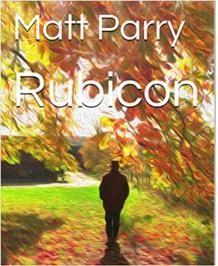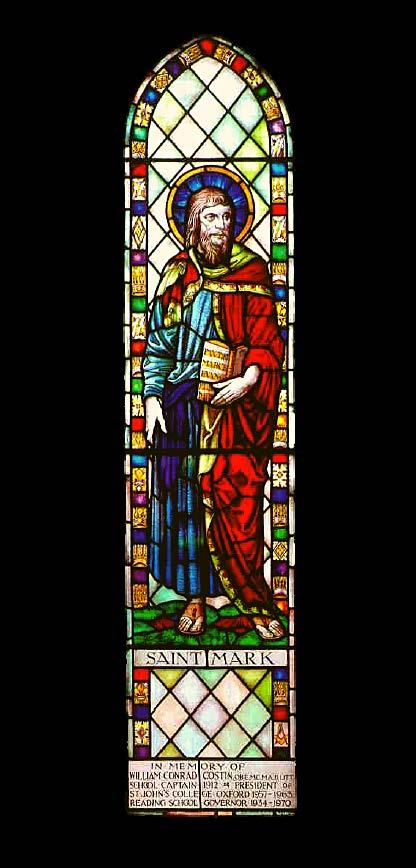
16 minute read
ORA Feature
A SHORT HISTORY OF READING SCHOOL CHAPEL
Our Chapel, originally intended to accommodate 300 boys, is a Grade II Listed Building. It is in plain early English style and built of English bond red brick with blue brick bands and chequering. The eaves have a small chevron decoration and the tiled roof fishscale bands. There are eight bays with dividing buttresses, five bays of paired lancets, a small gabled porch at the southwest corner, lancets at the west end and a stepped triple lancet at the east end. The vestry forms an extension southward and has a small belfry and tall octagonal tower.
Advertisement
The interior, basically plain brick when constructed, was and is much enriched by the arch-braced collar beam trusses in the roof. There are four groups of pews facing towards a central aisle and an organ loft above the western entrance. Alfred Waterhouse designed the Chapel to be in a complementary style to the main buildings. The builders were Messrs. Wright & Goodchild and the £3,000 cost of the Chapel was raised by voluntary subscription. (There was no heating or electric lighting in the Chapel when it was built – that was to come later). In July 1873, the foundation stone was laid by John Walter, MP., proprietor of The Times (he lived at Bearwood). The stone contained copies of The Times, Berkshire Chronicle and Reading Mercury; coins of the realm; a ‘parchment’ (contents unrecorded) and a list of the Trustees, masters and boys. On 19th February 1874, the Chapel was opened by the Bishop of Oxford, John Fielder Mackarness, with the Mayor and Corporation, Town Clerk and Serjeants present in the congregation. At that time the windows along the north and south sides were all plain, but these have gradually been replaced by stained glass (the first stained glass windows were the triple at the east end of the Chapel installed in 1886 to commemorate the 400th year (1886) since what is now known to be the refoundation of the School).
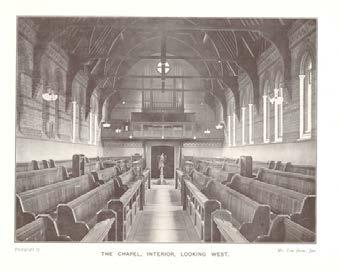
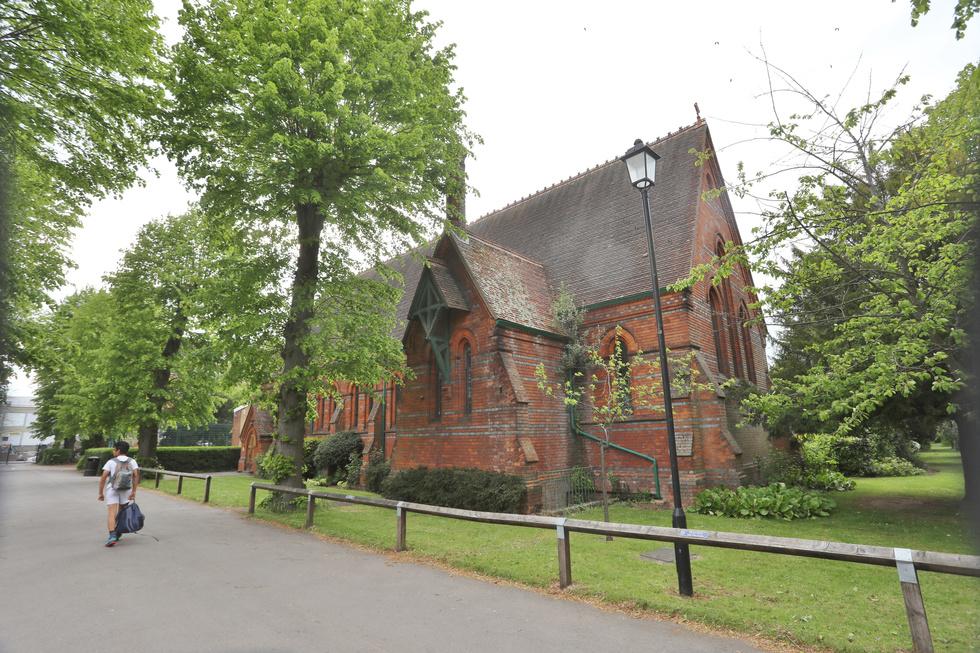
There are now twenty stained glass windows on the north and south sides and five former Headmasters are commemorated, two former second masters, three former masters and six ORs. The 500th Anniversary (1986) of the refounding is commemorated by the window to St Cecilia which was unveiled by HM Queen Elizabeth II on 19th May that year. There are thus three windows that, as yet, do not carry memorial inscriptions. The walls are now hung with war memorials and various brass plaques. The organ loft carries the Arms of the Beecham family, signifying the substantial and ongoing contribution to the music in the School over many years, by Lady Shirley Beecham and the Sir Thomas Beecham Trust. The current Hill organ is the third organ in the Chapel since it opened; the Hill was installed in 1993 after a sustained campaign for funds spearheaded by the late Gareth Price (1948-56) who was to become President of the ORA in 2006. Over the years much panelling has been installed and many beautiful gifts – lectern, altar cross, altar cloths, flower stands, carpets, curtains, etc. – have enhanced the Chapel; not least the panelling of the ante-chapel in memory of H E Lawrance, OR. and J L Sylo-Jones, long-serving second master. The pews at the west end of the Chapel in memory of two former masters, W E Streather and R T Black, are in oak and in time, perhaps, the idea of former headmaster C E Kemp to replace all of the pine by oak may come to fruition. How handsome that would be.
Ken Brown (1956-63) Archivist, Old Redingensians Association
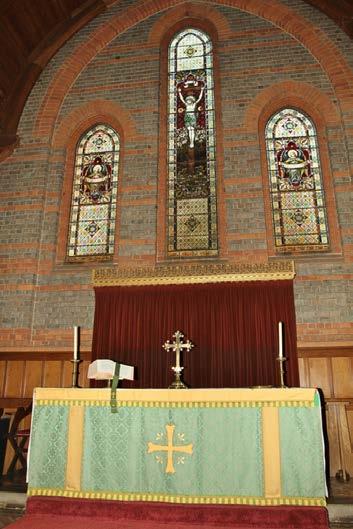
The Reading School Chapel has been at the heart of school life since 1874 providing a peaceful haven and place for reflection for staff, students and visitors alike. We have seen countless Remembrance Services and Carol Services as well as celebrations taking place for OR weddings and christenings. We now appeal to you, as our School Chapel now requires a roof replacement and we are raising funds to cover the cost to make it watertight for the future. Please help us to reach our target of estimated cost of £100K, all donations would be greatly appreciated. If you would like to make a donation restricted to the Chapel please contact development@reading-school.co.uk.
1929: THE WEST HOUSE CHAMPION IV
By Ken C Brown (OR 1955-1963)
Rowing was resurrected, not for the first time, in 1920 and competition between House ‘fours’ started that year. When ‘Archie’ Meads took over the coaching in 1922, the club began to flourish, but the House Competition lapsed. The acquisition of two new fours and equipment in 1929 enabled the House Championship to re-start after a lapse of seven years. West House emerged as undefeated winners and their Champion Boat comprised five boys who all distinguished themselves at School – two of them became Captain of School – and in their adult lives. They were:
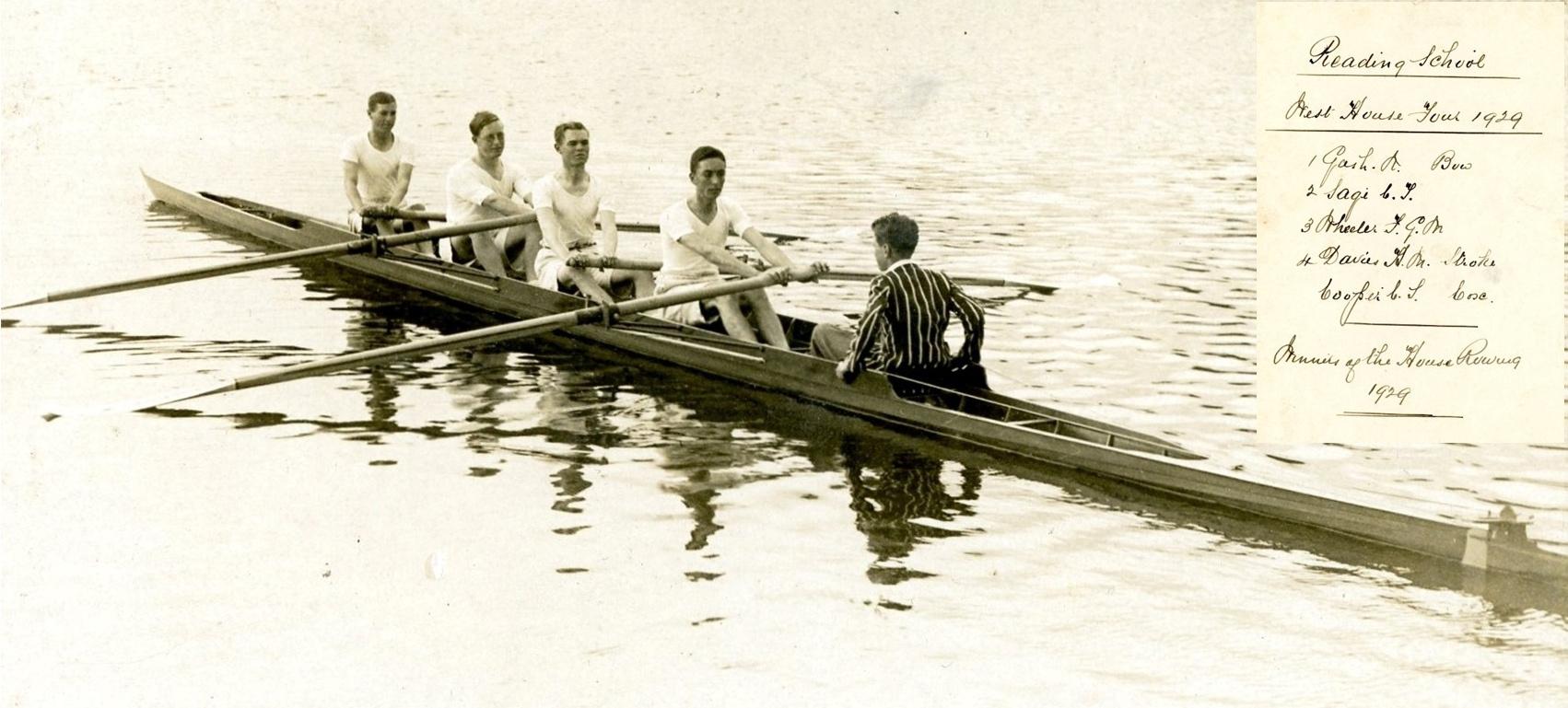
BOW: NORMAN GASH (1923-30)
He was born in India the son of a regular soldier who was based at Brock Barracks when Norman entered Reading School. He became a Prefect, and gained School Running Colours and a Debating Society reputation before leaving with the Sir Thomas White Scholarship to St John’s College, Oxford where he gained a History First. He married in 1935 and became the father of two daughters. During the Second World War, he rose to the rank of Major in the Intelligence Corps and post-war began to build the reputation that was to see him regarded as one of the foremost scholars of nineteenth-century Britain. When he retired to Langport, Somerset, he was Professor Norman Gash CBE FBA FRSL FRSE FRHistS. He lived until the age of 97 and is now commemorated on a ‘Tea Tray’ in Big School.
2. CHARLES FREDERICK SAGE (1923-31)
Reading’s future first citizen left School a House Prefect, Captain of the 1st XV and with four School Colours, Rugby, Athletics, Rowing and Shooting. He became a leading businessman in the town as the proprietor of Hobbs Laundry which had many branches. During the Second World War, he was a Captain in the Royal Artillery. Between 1959 and 1990 he served as a Town Councillor, was Mayor in 1979-80 (his wife Kathleen, who he married in 1943, was Mayor in 1976-77) and in 1991 joined his wife as an honorary Freeman of the Borough. He represented Berkshire at Rugby (Captain) and Water Polo, was President of Reading Swimming Club, a Vice-President of Reading Rugby Club, 55 years a member of the Old Boys Lodge and President of the Old Redingensians Club in 1980/81. He died in 2003 at the age of 90.
In microcosm, the crew of the boat illustrates what the School has always been capable of at its best. In the words of the present Headmaster, the members of Reading School are part of an unbroken chain, those before us, and those after us.
3. FRANK GEORGE MICHAEL WHEELER (1921-29)

The Captain of the Boat and a School Rowing Colour, he also became Captain of West House, Hon Sec of the Debating Society ‘definitely the best speaker in the Society’ and of Seekers and (like Sage and Cooper) a Sergeant in the OTC. He gained a First Class Honours degree in French at Reading University, a Dip Ed and by 1935 was Head of French at Thetford. He married Sybil Gosling in 1937 and they had a son. War intervened and he became, like Norman Gash, an Officer in the Intelligence Corps. He also rose to the rank of Major, transferring to the RAEC where he was mentioned in Despatches ‘for service in Palestine 1945-48’. A third career, still with a strong teaching element, commenced when he was ordained into the church and he continued in the ministry until his death, aged 82 in 1993.
STROKE: HOWARD MERRETT DAVIES (1923-30)
Yet another Captain of West House, School Rowing Colour and member of the Debating Society, he was also Hon Sec of Seekers (how the influence of the West House Master, J W Saunders, is reflected in all these boys). Additionally, he became Captain of the School and was CSM of the OTC. He went to Reading University and gained a BSc with Hons. (Special) in Chemistry. He married Marjorie Berry in 1938 and had a career as an agricultural scientist dying at the age of 63 in Walton-on-Thames. Howard was the elder brother of Robert Malcolm Deryck Davies (OR) who became MP for Cambridge and, like Howard, was on the political left.
COX: CHARLES STANLEY COOPER (1926-1933)
By 1932, Stanley Cox was stroking his House IV, and the following year, he became Captain of School Boats. To this should be added Captain of School, Captain of West House, Captain of Shooting and School Rugby Colours as the leader of the pack. He was a Sergeant in the OTC. and gained a Cadetship at RAF College, Cranwell, passing out, in 1935, second in the College. He married Joan French (sister of OR’s) in 1939 and their son, Chris, was born in 1941. By the time his Beaufighter was shot down in flames, in 1943, over the North Sea, he was Wing Commander C S Cooper DFC. The award was given for leading 254 Squadron ‘with great skill and dash, setting a most inspiring example’. Stanley was 29 years old.
J O H N C R I S W I C K : A M E M O I R
Written By John Criswick (OR 1950-1957) and Ken C Brown (OR 1955-1963). As an introduction to John’s memoir, which we have illustrated, shortly after he left School (where he became Hon Sec of the Art Club) a trip to Ceylon (Sri Lanka) convinced him that the tropics should be his home. In 1961, armed with an art teaching degree, he emigrated to British Guiana teaching there for 11 years and then moving to his present home in Grenada where he established his internationally renowned plant nursery and garden, St Rose, situated above the village of La Mode, St Georges. His horticultural expertise has been used in Grenada’s annual exhibit at the Chelsea Flower Show where it has been a frequent Gold Medal winner. Having just read the ORA April newsletter, in which I searched fruitlessly for news of any of my contemporaries, at least those known to me, I decided I should write a memoir of my own days at Reading School and see if it results in any expressions of interest. I was born on 13 January 1937, so I am now 85. In 1951, when I was 14, my family moved to Reading and I sat an exam, all by myself, in a little building that was some kind of library (Wells Library, right), quite near the tuck shop (image left), and as a result of this exam, I was enrolled in the School. My best subjects were English, French and Art. The classrooms I can remember were in South House. Two of the boarders in South House became my friends, Robert Amram and Michael Wolfers. It was surprising that a brilliant sportsman like Robert Amram should befriend me because I actively disliked all games (this even extends to card games) and was hopelessly bad at them. But I was attracted to all things international from an early age (at the age of six I announced to the grown-ups that when I grew up I would not live in England) and Robert used to spend his school holidays in Milan and Istanbul. His stepfather was Turkish and his mother was born in Budapest. Being Jewish she had escaped to England just in time, but when Robert’s father flew to Croydon Airport he was refused entry into Britain, was sent back to Budapest and eventually died in a concentration camp. I knew nothing of this until decades later, however. Michael Wolfers was also not “sportif” (to use his own word) and he came close to being related to Robert, as their grandmothers were extremely close friends, but he was academically brilliant, won all the prizes and a scholarship to Wadham College, Oxford University. He also was Jewish.
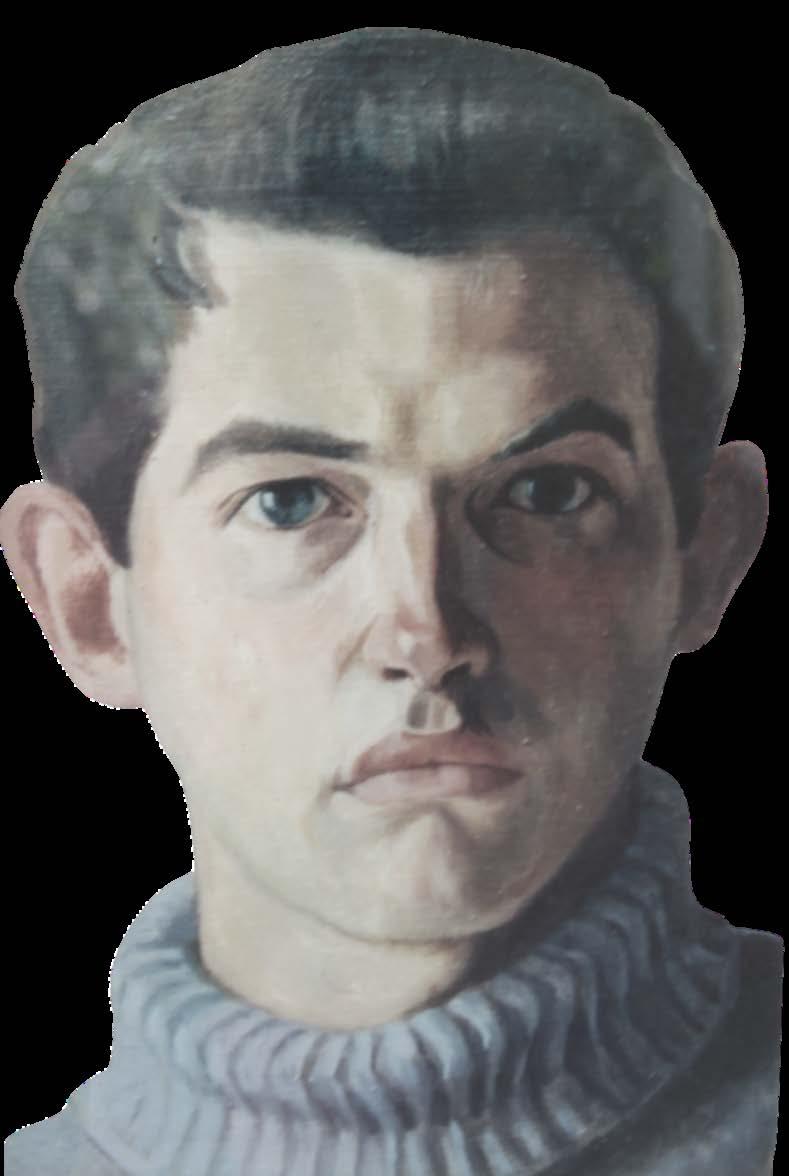

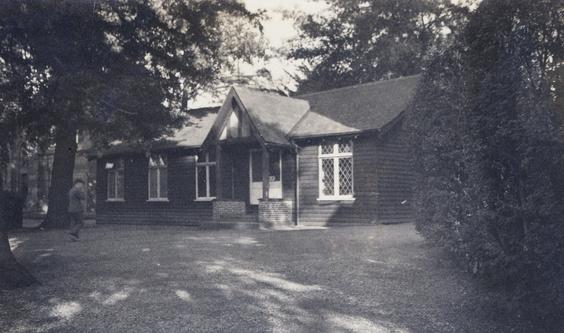
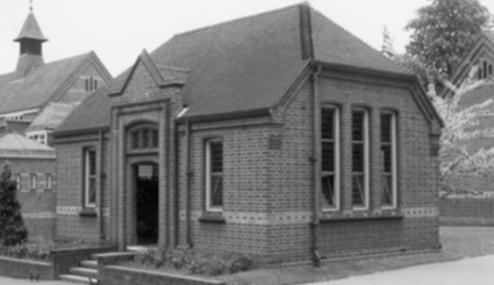
R G Amram 1951- 1957 SH M Wolfers 1950- 1957 SH W J Agard 1953- 1955 WW M J A L Jerrold 1948- 1955 C
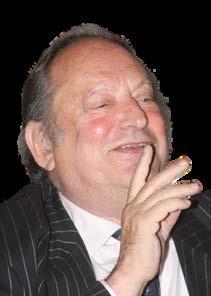
Other international students I befriended were Chua Poey Siu (1952-54 SH) from Malaysia, Ali Sinan Tanla (1952-55 SH) from Turkey and Keith Agard from Trinidad. However, I did make friends with "common" or "garden English boys", as we were the considered, in particular, Michael Jerrold, who lived quite near my home in Caversham Heights. In June 1953, when we were 16, we slept one night on the pavement in London to see the Queen the next day as she passed by after her coronation. In August of the same year, Michael Jerrold and I set off on a 6-week hitch-hiking holiday in France, where I learned to speak French. Thanks to Reading School I had been given a good grounding in French grammar, but we were never actually taught to speak French. It was treated as an academic subject. But the need to communicate with shopkeepers, and the drivers who picked us up, was so strong that I found myself speaking grammatical French. At that time, not many French people spoke English. Another English boy I became friends with was Garth Thorne (1949-56 C), who lived in Cookham Village, also the home of the English painter Stanley Spencer. I have lost touch with Garth and cannot say if he is still alive (Ed. We understand he is alive and living in Reading). Michael Jerrold I regained communication with comparatively recently. Fun-loving Michael actually became a headmaster, which those who knew him may think riotously funny, especially himself, as he told me. But maybe he was a very good one. During our schooldays, it can be far from clear what we are cut out to be. Unfortunately, in his later years, he developed serious health problems and I received the news of his death a few years ago. I also remember Trevor Crisp, aka Titch Crisp because of his height, a boarder in South House, and recently felt like getting in touch with him, but enquiries led to the fact of his death. This is always very sad. Robert Amram lives in Mexico, on the peninsular of Baja California. We are in touch occasionally, but I regret that he never took to typing and emailing, which I depend on so greatly. Michael Wolfers became Africa Correspondent for The Times and went on to spend his life largely in Africa, although he also retained a house in London. On a visit to England, he was invited to the Garrick Club for the 75th birthday dinner of his old Oxford friend Melvyn Bragg, (Ed. now Lord Bragg) but unfortunately, he suffered a massive heart attack and died. He had previously had a heart operation. We were so lucky at Reading School to have an indoor, heated swimming pool. I don’t remember thinking that we were lucky. As youngsters, we usually take everything for granted. When I started art classes in the art room, John Liddell was the art master. We did pottery as well. An older student there was Michael Oakley, whose lino-cut of the school’s Victorian Gothic red brick building appears in the April Newsletter, bringing back memories.
T N Crisp 1945-1954 SH J W Liddell ATD (Lond) (Staff 1949- 1955) M J Oakley 1944- 1954 W H Weinberger ATD (Lond) (Staff 1954- 1958)
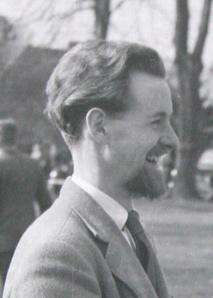
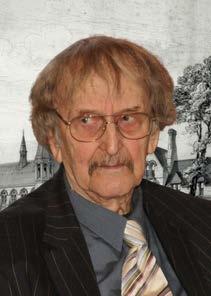
Quite soon, John Liddell was replaced as art master by Harry Weinberger, destined to become a major influence in my life, my oracle, in fact. We became great friends. Also Jewish, he had escaped from Berlin just before war was declared and lived with an uncle in Hampstead, next door to Sigmund Freud. He then joined the British army and saw action in Italy. After the war he began teaching in a working-class district in London and his recollections of it sounded very much like E.R. Braithwaite’s “To Sir With Love” which I was to read later.
So Harry was well equipped to offer us a very serious view of life and he was also a very serious painter within a German expressionist genre. His uncle Josef Hermann, living in Wales, had already made a name for himself in the art world.
Once again, I feel I was lucky to go to Reading School. Harry encouraged me to paint and eventually, I decided to make a career for myself in art. The only way to do this was to become an art teacher; so in 1956 I began studying art at the School of Fine Art at Reading University, then in London Road. I spent a year at London University studying art teaching and in July 1961, I took up a position as an art master at Central High School in Georgetown, Guyana, later moving to Grenada, West Indies, where I am writing this.
John Criswick at St Rose Nursery
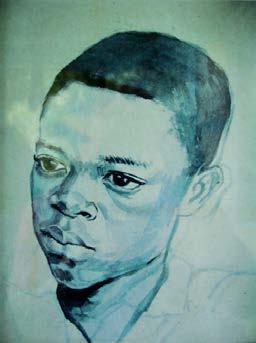
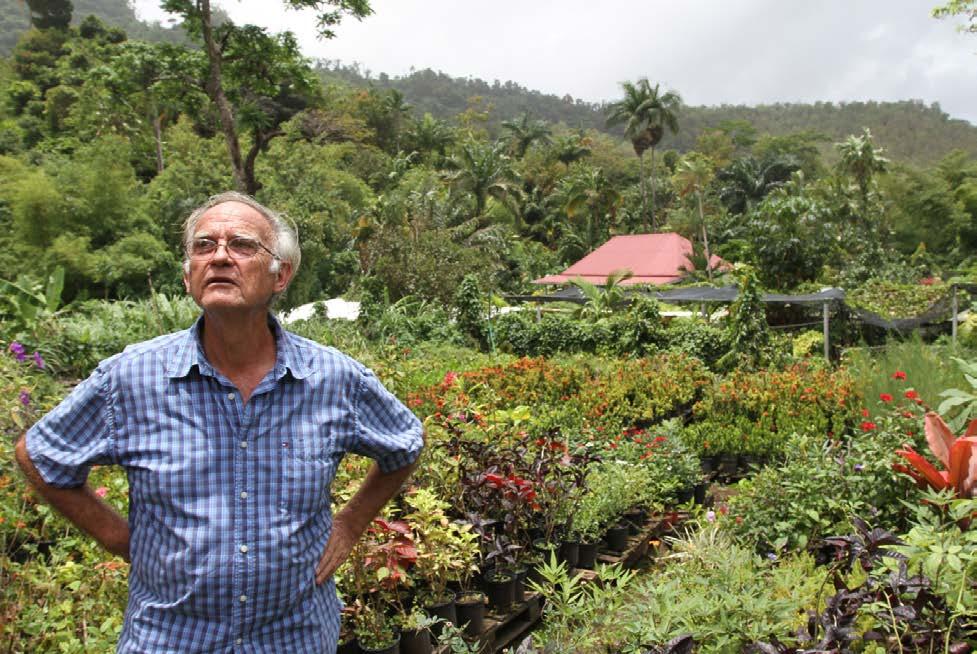
THE OR BOOKSHELF
Cheryl Underhill The Box of Beautiful Letters
A wartime love story revealed from the 1939-41 correspondence between Lily Smith and RAF pilot Martyn Allies, compiled by their daughter. Martyn and Lilly were the parents of C M (Chris) Allies (1955-62) who designed the cover and E R (Bob) Allies (1964-71.) Softback £11.99 364 pp YouCaxton Publications 2021
C E (Colin) Brent OR (1946-56) Pre-Georgian Lewes c890-1714: the emergence of a county town
This is not a new book but one of a number of scholarly, detailed and beautifully produced books on Lewes written by the foremost authority on the county town of East Sussex. Hardcover 480 pp Colin Brent Books 2004
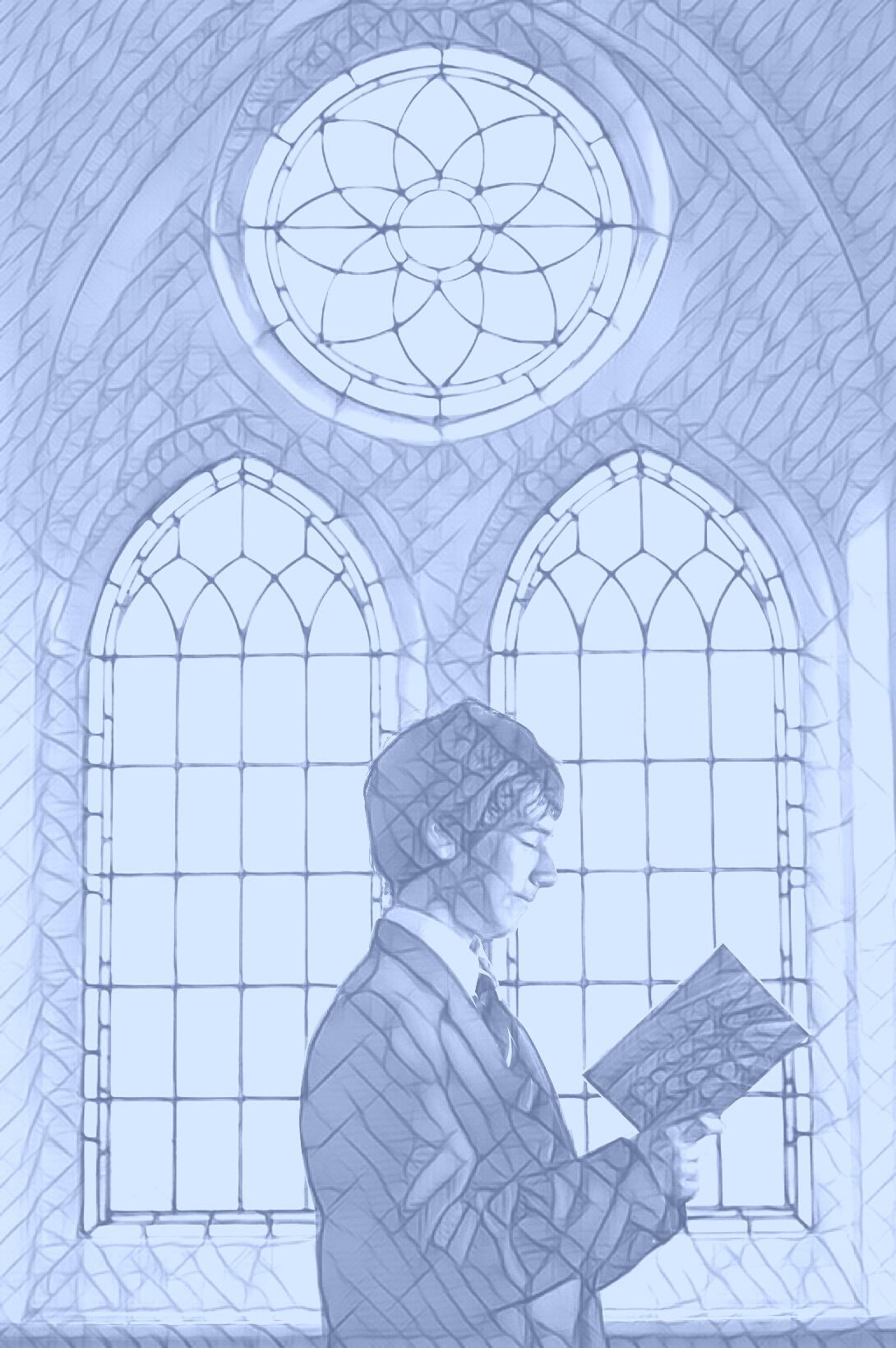
David Baker Geoffrey Tristram A Very British Organist “I am He”
G O (Geoffrey) Tristram OR (1926-35) would have reached his centenary this year. He is still highly revered as a celebrated recitalist, teacher and as the remarkable organist and master of the choristers at Christchurch Priory from 1949-79. Available with CD Hardback £29.95 Softback £16.95 380 pp AuthorHouse UK 2022
Matt Perry Stitched Up A Lady Cynthia adventure
Matt Parry is Professor M L (Martin) Parsons OR (196371). Stitched Up is a novel set against the background of the rise of Sir Oswald Mosley. Rubicon is the second Lady Cynthia adventure and set at the end of the war. Another five Lady Cynthia adventures have been completed: Spectre; Blast; Paradox; Penitential; Expendable. Why Martin turned his hand to fiction will be revealed in the 2023 ORA Newsletter…. Paperback 275 pp Available on Amazon
